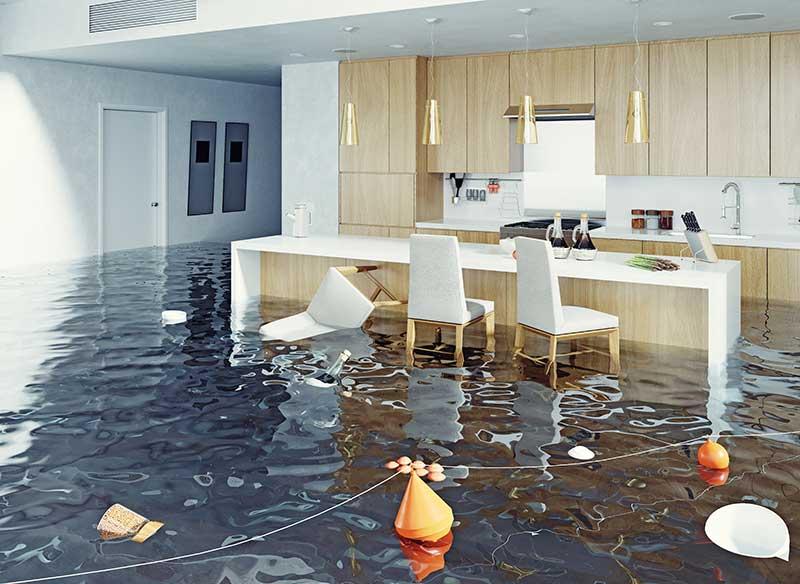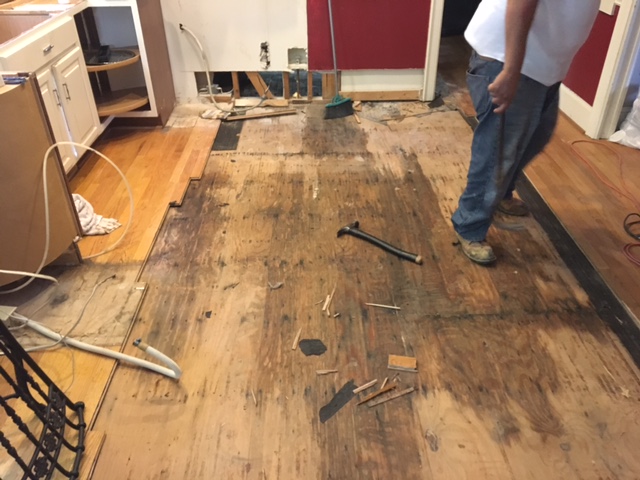Website
The content listed below relating to Water Damage in Kitchen is immensely enlightening. Don't miss out on it.

The cooking area is the area where a lot of water activity goes on. You can hardly do anything without utilizing water in the kitchen area, from cooking, cleansing, and also doing the recipes.
Hence, examining your kitchen every now and then is a requirement. This is since it has a greater possibility of obtaining water damage due to the appliances you utilize there.
When defective, these home appliances that manage water might make your kitchen area messy and affect the structure of your building in the long run.
So, let's check out some causes of the water damage in the cooking area and also what you need to watch out for.
Some Sources Of Water Problems in the Kitchen area
These are a few causes of water damage in the kitchen.
Faulty Kitchen Sink
The cooking area sink is an essential as well as a lot of utilized part of the kitchen area. Thus it is prone to water damage; damages such as blocked pipes, dripping pipelines, and also malfunctioning taps.
These damages can be irritating, especially when one is active in the cooking area. Nevertheless, it doesn't just take place without offering a clue or an indicator. Here are some signs to recognize when your sink is not fine
These are the significant problems that can happen to your kitchen sink. Nonetheless, one method to stop this damages is by guaranteeing that food particles do not get involved in the pipes. You are also examining the faucets and also pipes and also making sure that it is properly dealt with as well as in good condition.
Dripping Dishwashing machine
Dishwashers make life in the kitchen area easier. Nonetheless, it is an optional kitchen area device as well as, when readily available, can be a source of water damage. Furthermore, like various other machines, it will create mistakes over time, despite maintenance.
One of the faults is dripping via the door or beneath the dishwasher. These faults create as a result of age, cracks, wrong usage, loosened web links to pipelines, and so on.
Faults due to age come from continuous usage. Because of this, the door leakages as a result of shutting and opening.
Additionally, mistakes from the wrong use might cause water damage by presenting cracks to it. It is recommended to comply with the hand-operated overview of the dishwasher to avoid this certain damages.
The leaks under the dishwasher can come from cracks in the gasket, hose pipe, as well as loosened or incorrect connection to pipes or drains pipes.
This sort of leakage frequently goes unnoticed as well as can be there for a long period of time. Due to the time frame, it might damage the floor as well as trigger mold growth.
Much more so, the longer the water stays, you will notice the warping of the flooring where the dishwasher is. When inspecting if your dishwashing machine leaks, this is an excellent indicator to look out for. Identifying and fixing this on time protects against significant water damage to your floor covering.
Faulty Drain Pipeline
Drain Pipelines are needed parts of our homes, especially in our washrooms and also kitchen areas. However, they get damaged by getting blocked, fractured, as well as burst. Or even worse, they can be incorrectly or loosely attached; whichever the instance may be, it can be a severe trouble.
Defective drain pipelines can trigger water damage and, therefore, trigger mold development and injure the appearance of your wall. It can additionally make the afflicted area look untidy.
It is recommended always to inspect to guarantee that all the pipelines are in great problem as well as get an audio plumbing system to keep as well as fix any kind of issues.
Profits
Watching out for problems in your kitchen area can be tasking yet required. It makes your job there easier as well as safer.
Nevertheless, the reasons noted above are just a couple of elements to take into consideration, especially if your kitchen area has a great deal of appliances.
Get a specialist pipes service to come around and also examine for any damage and also obtain them fixed.
It makes your kitchen area messy as well as damp, specifically when dripping from the pipes. As well as if it is trickling from the tap, it leads to water wastefulness.
It is an optional kitchen appliance and, when available, can be a source of water damage. Much more so, the longer the water stays, you will observe the bending of the flooring where the dish washer is. Identifying and also repairing this on time protects against significant water damage to your floor covering.
WAYS TO PROTECT YOUR KITCHEN FROM WATER DAMAGE
The kitchen is one of the most significant rooms in your house, as it is a multipurpose room wherein you can do your cooking and cleaning. Nowadays, homeowners tend to ignore the problems under their sink or appliances because of their busy schedules. However, most household floods occur due to plumbing and appliance failure. One of the most common scenarios that cause water damage to your kitchen is when the dishwasher malfunctions and floods gallons of water.
Water damage in your kitchen can cause several problems, including cosmetic damage, mold growth, and even an unpleasant smell. Often, if you fail to neglect the problem, there are always consequences. This article will help you protect your kitchen from water damage.
Common Causes of Water damage in your kitchen
Pipe problems are the most common source of water leaks under your sink. If homeowners ignore this issue, it will burst and flood the kitchen. Dishwasher leaks can be a source of water damage in your kitchen. An old, broken, and defective dishwasher can cause leaks, damage to your floor, and even mold growth. Refrigerator leaks can cause water damage in your kitchen, as sometimes melted ice from defrosting can cause leaks. Furthermore, if your refrigerator has internal problems, it is very likely to cause water damage. Back-splash and sink caulking can cause discoloration and water damage to your countertop tiles. Ways to Protect Your Kitchen From Water Damage
Regular maintenance
The most important thing you can do to protect your kitchen from water damage is to inspect the sinks, drains, and pipes, as well as the kitchen appliances, regularly. As with the sink, check for missing or deteriorated caulk. Remove the old caulk and clean the area thoroughly and re-seal it with fresh silicone. Furthermore, sweep the drain regularly, empty the filter and dispose of the debris in the garbage, and inspect the supply lines and valve for cracks.
Check your appliances
Check the user’s manual for instruction and proper use of every water-related appliance installed in your kitchen. For the dishwasher, check this procedure to prevent the dishwasher from flooding your kitchen. Check the appliances that need water, such as the coffee maker, ice maker, and water cooler, as they can become the cause of water damage in your kitchen. You may call a professional to check and repair damaged appliances and professional restoration for water damage clean-up.
Garbage clean-up
Fats, oil, and grease are common in the kitchen. Pouring them down the drain can cause clogs and sewage backup, which may result in significant kitchen water damage. If your kitchen sink is clogged, use a solution of hot water, baking soda, and vinegar to unclog the fats and oils in the pipes. Also, make sure to throw out the debris in the trash and clean the sink properly using paper towels for greases and oil and soap or bleach solution for the sink itself.
Shut off your water line
Make sure to shut off your main water line, especially if you're away and having some flood issue. As mentioned, dishwasher leaks are one of the most common culprits of water damage in the kitchen. So, make sure to only use the dishwasher if someone is at home and available to attend in case a problem arises.
Furthermore, it is also important that every member of your household knows where the shut-off valves are located. So in case of an emergency, they can mitigate the damage by turning off the water source.
Install leak detectors
One of the best ways to catch water damage before it could even cause serious damage to your home or business is by installing a water or leak detector. A leak detector monitors the flow of water through a pipeline, can detect moisture in the air for molds, and tracks the water temperature. Also, it can shut off your water line in case of an emergency. Install leak detectors under the kitchen sink, near the dishwasher and refrigerator.
https://superiorrestore.com/7-ways-to-protect-your-kitchen-from-water-damage/

I'm very focused on How To Prevent Water Damage To Your Kitchen and I am praying you enjoyed reading our blog entry. Enjoyed our blog entry? Please share it. Let other people discover it. Many thanks for taking the time to read it.
Customer Reviews